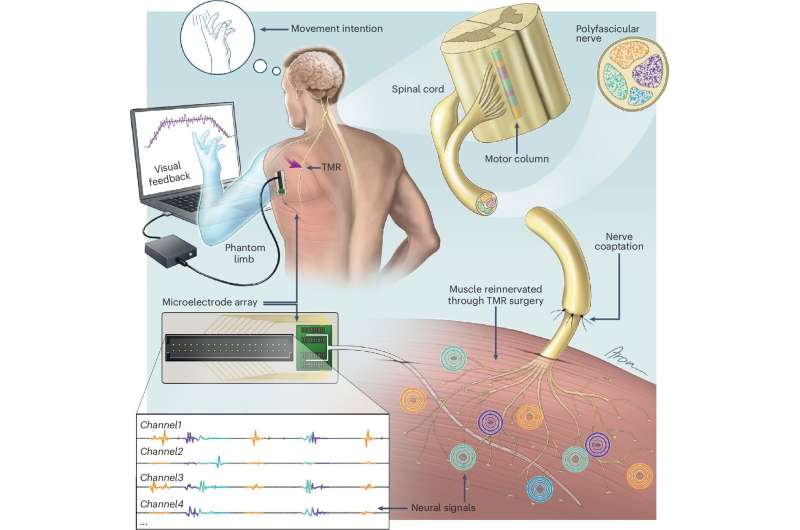Novel (40-channel) microelectrodes were implanted in the muscles of three arm amputee study participants, which had previously been reconnected to nerves through a process known as targeted muscle reinnervation (TMR). This surgical procedure redirects nerve pathways remaining after amputation to muscles that are still present, thus creating new interfaces through which neural signals can be retrieved.
By combining surgical reinnervation with implantable microelectrodes, scientists at MedUni Vienna and Imperial College London succeeded for the first time in directly measuring the activity of individual motor neurons—the nerve cells in the spinal cord that transmit movement commands to the muscles—and linking their signal patterns to specific movement intentions. To achieve this result, the participants mentally performed various movements with their phantom arm.

